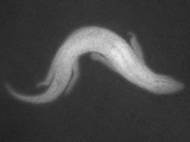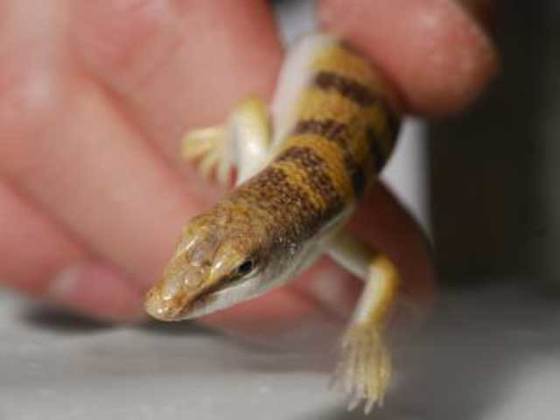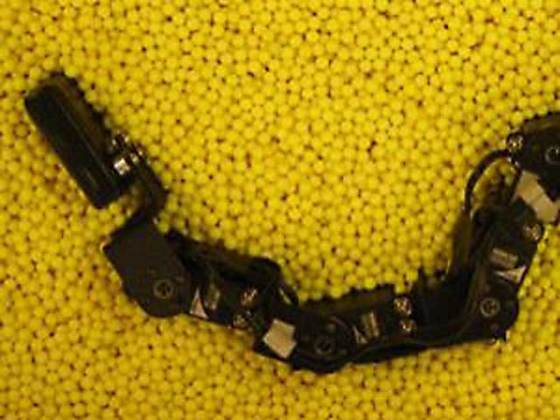Sandfish lizard motion biomimicry used for robot development
 To survive in its hot habitat, the sandfish lizard (Scincus scincus), like other desert-dwelling creatures, spends a lot of time underground. Unlike other creatures that live in burrows or sand traps, this lizard moves over and through the sand in its own unique way. That movement intrigued researchers and inspired them to develop a robot capable to swim through sand.
To survive in its hot habitat, the sandfish lizard (Scincus scincus), like other desert-dwelling creatures, spends a lot of time underground. Unlike other creatures that live in burrows or sand traps, this lizard moves over and through the sand in its own unique way. That movement intrigued researchers and inspired them to develop a robot capable to swim through sand.
The sandfish used in the study inhabits the Sahara desert in Africa and it is approximately 10 cm (4 inches) long. It uses its long, wedge -shaped snout and countersunk lower jaw to rapidly bury into and swim within sand. The sandfish’s body has flattened sides and is covered with smooth shiny scales, its legs are short and sturdy with long and flattened fringed toes and its tail tapers to a fine point.
To conduct controlled experiments with the sandfish, Daniel Goldman, physicist at CRAB Lab of Georgia Institute of Technology, and graduate students Ryan Maladen, Yang Ding and Chen Li built a glass bead-filled container with tiny holes in the bottom through which air could be blown. The air pulses elevated the beads and caused them to settle into a loosely packed solid state. Repeated pulses of air compact the material, thus allowing the researchers to closely control the density of the material. Since they weren’t able to observe the movement of the lizard bellow the surface, they used high-speed x-ray imaging system to record animal’s movement.
“Since loosely packed media is easier to push through and closely packed is harder to push through, we thought there should be some difference in the sandfish’s locomotion,” said Goldman. “But the results surprised us because the density of the granular media did not affect how the sandfish traveled through the sand; it was always the same undulatory wavelike pattern.”
For a given wave frequency, the swimming speed depended only on the frequency of the wave and not on the density. The researchers found that the swimming speed varied depending on the frequency of the undulations, about 2 to 4 per second. Interestingly, speed was unaffected by how compacted the sand was. The researchers determined that that was because the drag and thrust forces increase in compact sand, and thus the ratio of these forces is no different than it is in more loosely packed sand.
Working with Paul Umbanhowar of Northwestern University in Evanston, Illinois, the team plugged their results into a computer model, which they used to show that a snake-like robot with just seven body segments could travel through a granular medium like sand.
The team built a 35 centimeters (13.8 inches) long version of the robot, made from seven aluminum segments linked by six motors, all clothed in spandex to prevent the motors from becoming jammed. Afterwards, they tested the robot by burying it in a container filled with small plastic spheres.
When the robot undulated its body at a frequency similar to the lizard, they found it could move forward at speeds of up to 0.3 body lengths per wave cycle (close to 0.4 body lengths per cycle that a submerged lizard can achieve). The researchers say the robot could eventually match the lizard for speed if more jointed segments are added to make its movements smoother.
This is another great example of biomimicry that could help the development of rescue robots used to find people in deserts or in loose debris resulting from an earthquake. With its improvement and a few modifications, this robot could be used to explore under the grainy surface of planets and natural satellites. For more information, you can read the paper they publihes in Science magazine “Undulatory Swimming in Sand: Subsurface Locomotion of the Sandfish Lizard“.











Wonderful example of biomimicking!
Dr.A.Jagadeesh Nellore(AP),India